Showing Spotlights 521 - 528 of 2779 in category All (newest first):
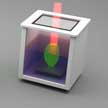 Hierarchical structures, spanning multiple length scales from nano- to macroscales, are very common in nature; but only in recent years have they been systematically studied in materials science, in order to understand the specific effects they can have on the mechanical properties of various systems. Researchers have developed a straightforward, cost-efficient, and fast route to fabricate hierarchical porous structures in a 3D printer. With this technique they can process nanoporous materials and fabricate structures from nanometer to centimeter scale.
Hierarchical structures, spanning multiple length scales from nano- to macroscales, are very common in nature; but only in recent years have they been systematically studied in materials science, in order to understand the specific effects they can have on the mechanical properties of various systems. Researchers have developed a straightforward, cost-efficient, and fast route to fabricate hierarchical porous structures in a 3D printer. With this technique they can process nanoporous materials and fabricate structures from nanometer to centimeter scale.
Oct 22nd, 2019
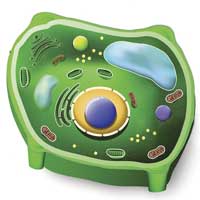 The increase in production and applications of metal-oxide nanoparticles (MO-NPs) raises concerns for the environment as well as for human health. The terrestrial environment, especially soil, is expected to be the largest repository for environmentally released MO-NPs. Therefore, the accurate determination of environmentally released MO-NPs is imperative to assess the real-time scenario of toxicity to soil biota and the threat to human beings via the food chain.
The increase in production and applications of metal-oxide nanoparticles (MO-NPs) raises concerns for the environment as well as for human health. The terrestrial environment, especially soil, is expected to be the largest repository for environmentally released MO-NPs. Therefore, the accurate determination of environmentally released MO-NPs is imperative to assess the real-time scenario of toxicity to soil biota and the threat to human beings via the food chain.
Oct 21st, 2019
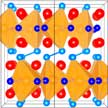 Scientists found that size-confinement - going from macroscopic bulk samples towards nanoparticles - leads to drastic changes in the atomic structure of certain magnetocaloric materials: The change from positive thermal expansion at the macroscale towards a negative thermal expansion (NTE) at the nanoscale. NTE materials are of increasing technological interest mostly because of the idea of mixing them with a symmetric negative thermal expansion material in order to create a composite material which has near-zero thermal expansion. The nanoparticle shape is particularly suitable for the design of such composites.
Scientists found that size-confinement - going from macroscopic bulk samples towards nanoparticles - leads to drastic changes in the atomic structure of certain magnetocaloric materials: The change from positive thermal expansion at the macroscale towards a negative thermal expansion (NTE) at the nanoscale. NTE materials are of increasing technological interest mostly because of the idea of mixing them with a symmetric negative thermal expansion material in order to create a composite material which has near-zero thermal expansion. The nanoparticle shape is particularly suitable for the design of such composites.
Oct 10th, 2019
 2019 marks the 150th anniversary of the Periodic Table, a unique tool, enabling scientist to predict the appearance and properties of matter on the Earth and in the the Universe. Different elements have played critical roles in different periods of human activities, with silicon (Si) being a key element, at present. However, the nanotechnology age has brought different elements into the limelight and transformed their roles in science and technology. A recent article discusses the most relevant elements from a nanotechnology perspective and their applications in nanomaterials.
2019 marks the 150th anniversary of the Periodic Table, a unique tool, enabling scientist to predict the appearance and properties of matter on the Earth and in the the Universe. Different elements have played critical roles in different periods of human activities, with silicon (Si) being a key element, at present. However, the nanotechnology age has brought different elements into the limelight and transformed their roles in science and technology. A recent article discusses the most relevant elements from a nanotechnology perspective and their applications in nanomaterials.
Oct 9th, 2019
 As a coating, hydrogels bring many advantages to regular solid surfaces, uniting the superior properties of the substrate with the superior properties of the hydrogel. However, making hydrogel coatings outside a laboratory environment can be difficult. Inspired by the economics of paint manufacturing, we have developed a technique for hydrogel coating preparation that breaks the process up into several steps. This step-wise synthetic pattern, decoupling polymerization from crosslinking and interlinking, divides the labor between the hydrogel coating maker and its user.
As a coating, hydrogels bring many advantages to regular solid surfaces, uniting the superior properties of the substrate with the superior properties of the hydrogel. However, making hydrogel coatings outside a laboratory environment can be difficult. Inspired by the economics of paint manufacturing, we have developed a technique for hydrogel coating preparation that breaks the process up into several steps. This step-wise synthetic pattern, decoupling polymerization from crosslinking and interlinking, divides the labor between the hydrogel coating maker and its user.
Oct 8th, 2019
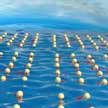 Ocean wave energy is an abundant resource of clean energy. However, having been explored for decades, there is still lacking efficient and economical technologies to convert water wave energy into electricity for large-scale applications Researchers have developed a new type of wave energy harvester, hierarchically structured triboelectric nanogenerator (HS-TENG), based on the triboelectric effect, targeting to harvest the huge blue energy for large-scale deployments.
Ocean wave energy is an abundant resource of clean energy. However, having been explored for decades, there is still lacking efficient and economical technologies to convert water wave energy into electricity for large-scale applications Researchers have developed a new type of wave energy harvester, hierarchically structured triboelectric nanogenerator (HS-TENG), based on the triboelectric effect, targeting to harvest the huge blue energy for large-scale deployments.
Oct 7th, 2019
 Researchers have developed a method for direct, point-of-use detection of mycotoxins in food. The method is based on the modification of electrolyte operated graphene filed effect transistors that have been specifically functionalized with aptamers by covalent binding. Demonstrating the performance of this method on Ochratoxin A, these sensors show a response time of within 5 minutes with a sensitivity down to 4 pg/ml - that is about three orders of magnitude less than accepted tolerance levels of Ochratoxin A.
Researchers have developed a method for direct, point-of-use detection of mycotoxins in food. The method is based on the modification of electrolyte operated graphene filed effect transistors that have been specifically functionalized with aptamers by covalent binding. Demonstrating the performance of this method on Ochratoxin A, these sensors show a response time of within 5 minutes with a sensitivity down to 4 pg/ml - that is about three orders of magnitude less than accepted tolerance levels of Ochratoxin A.
Oct 4th, 2019
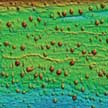 A novel and very promising design strategy for stretchable electronics is based on liquid metals; specifically the use of the oxide shell of liquid gallium alloys to fabricate polymerized liquid metal networks (Poly-LMNs). The novel attribute of these Poly-LMNs is that they increase in conductivity as they are elongated, resulting in the measured resistance across the conductor remaining nearly unchanged as they are stretched to 700% their original length. The implication of this effect is that a circuit can now be designed with a stretchable Poly-LMN wire that won?t change its resistance when stretched.
A novel and very promising design strategy for stretchable electronics is based on liquid metals; specifically the use of the oxide shell of liquid gallium alloys to fabricate polymerized liquid metal networks (Poly-LMNs). The novel attribute of these Poly-LMNs is that they increase in conductivity as they are elongated, resulting in the measured resistance across the conductor remaining nearly unchanged as they are stretched to 700% their original length. The implication of this effect is that a circuit can now be designed with a stretchable Poly-LMN wire that won?t change its resistance when stretched.
Oct 3rd, 2019
 Hierarchical structures, spanning multiple length scales from nano- to macroscales, are very common in nature; but only in recent years have they been systematically studied in materials science, in order to understand the specific effects they can have on the mechanical properties of various systems. Researchers have developed a straightforward, cost-efficient, and fast route to fabricate hierarchical porous structures in a 3D printer. With this technique they can process nanoporous materials and fabricate structures from nanometer to centimeter scale.
Hierarchical structures, spanning multiple length scales from nano- to macroscales, are very common in nature; but only in recent years have they been systematically studied in materials science, in order to understand the specific effects they can have on the mechanical properties of various systems. Researchers have developed a straightforward, cost-efficient, and fast route to fabricate hierarchical porous structures in a 3D printer. With this technique they can process nanoporous materials and fabricate structures from nanometer to centimeter scale.
 Subscribe to our Nanotechnology Spotlight feed
Subscribe to our Nanotechnology Spotlight feed





